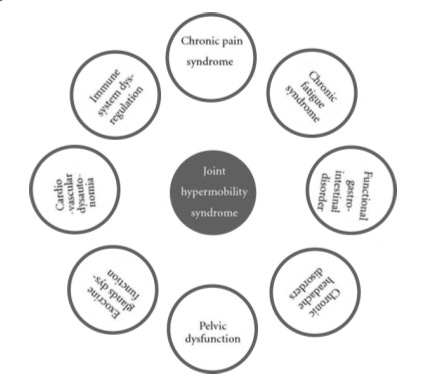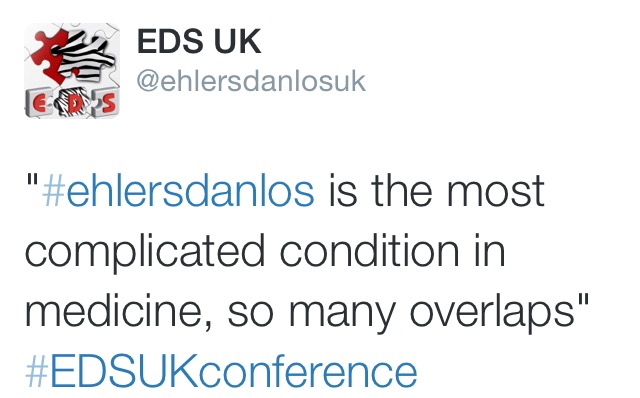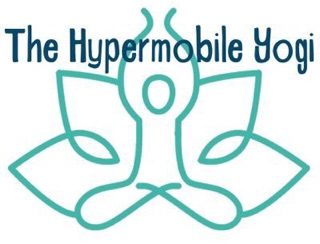WHAT IS EHLERS-DANLOS SYNDROME (EDS)?
Once you receive an Ehlers-Danlos syndrome diagnosis or even if you think you may have EDS, many people will ask, “What is Ehlers-Danlos syndrome?” Having knowledge on what EDS is and how it may “look” both on the outside and on the inside of the body, is one the best things that someone new to EDS can do for themselves. Taking the time to gain a strong understanding of EDS, has helped numerous people find the appropriate treatments and therapies, as well as learn ways to handle the different aches, pains and issues that may arise.

Ehlers-Danlos syndrome (EDS) is a group of heritable connective tissue disorders that are caused by various genetic defects in the collagen protein used to make our connective tissues. These disorders can cause a wide variety of complications throughout all body systems – Ehlers-Danlos syndrome is very much a multi-systemic disease. Previously believed to be rare, based on recent research, the prevalence of EDS could be as high as 1:100 to 1:200 people (Collins, 2015; Nielsen, 2013), or higher. Each type of EDS is characterized by a distinct problem in making or using one of the types of collagen. Collagen is the body’s most abundant protein and can be found in nearly every component of our bodies, from our ears, to our eyes and mouth, to our heart, surrounding our internal organs and veins, connecting our joints, in our bones and down to the tips of our toes. Collagen is a structural protein that provides both strength and elasticity to our tissues and allows our tissues to be stretched safely without damage or without being stretched past a normal range. The collagen protein under a microscope has the shape of a twisting helix, and stability for the collagen protein comes from the amino acids Hydroxyproline and proline. L-Hydroxyproline — a critical component of the collagen protein. Basically, Ehlers-Danlos Syndromes are structural problems caused by defects to the “glue” that holds our bodies together.
A perfect example is described on the website for the EDS 2016 International Symposium (eds2016.org) – “If one builds a house with bad materials, perhaps half [of] the necessary wood or aluminum nails, one knows there will be problems. Some problems can be anticipated, but because those materials were used everywhere and aren’t necessarily visible, one may be surprised. Being built out of a protein that doesn’t behave the way it should can result in widespread difficulties in a wide range of severities, even in places one wouldn’t think are connected until one realizes that collagen is used there, too.”
As you can see, Ehlers-Danlos syndrome is a multi-systemic condition that presents differently in those affected. Symptoms of Ehlers-Danlos Syndrome often include, but are not limited to: joint hypermobility (not to be confused with flexibility, as people can be hypermobile without being flexible and vice versa—hypermobile joints are loose or unstable and slip or dislocate easily), complete dislocations, prone to bruising easily and tissue fragility – such as skin that tears easily, vascular issues and internal organ rupture, poor wound healing, abnormal scarring, chronic fatigue, chronic pain, cardiac abnormalities, foot deformities, TMJ dysfunction, low muscle tone, hernias, early osteoarthritis and degenerative discs, various GI problems and allergies, chronic headaches, eye problems, dysautonomia (i.e. POTS), dental issues, chronic pelvic pain in women, congenital defects of the spine (including the head, neck and the entire spinal column), ADD/ADHD, learning disabilities, circulatory issues and much more.
You can read more about the signs and symptoms of EDS, by going here.

Meme originally shared by Ehlers-Danlos Support UK (www.ehlers-danlos.org) via Twitter.
Often, patients are diagnosed with various conditions that are considered comorbid to Ehlers-Danlos syndrome – that is the presence of one or more additional disorders that can co-occur with the primary disease or disorder, such as: fibromyalgia, chronic fatigue syndrome/ME, mast cell activation disorders, IBS, gastroparesis and functional GI issues, POTS and other dysautonomia, CRPS/RSD, Raynaud’s and other circulatory conditions, various dermatological conditions, mitral valve prolapse and other cardiac conditions, osteogenesis imperfecta, Chiari malformation, scoliosis, craniocervical instability, tethered cord syndrome and other structural congenital conditions of the spinal column, osteoarthritis and degenerative disc disease, migraines and other types of chronic headaches; and various conditions of the eye, ears, and skin. These comorbid can be diagnosed at times, without diagnosing the underlying cause, EDS.
Pain can be widespread—for instance, collagen makes up the fascia, which is the tissue sheath that holds everything together and wraps around the entire body—but a cause of pain may not show up in MRIs or X-rays, and will often be out-of-proportion to any clinical findings.
Ehlers-Danlos Syndrome is usually diagnosed based upon the Beighton Score; a nine-point clinical assessment for joint hypermobility. Those that score greater than a 4/9 are diagnosed with EDS Hypermobility Type. However, this assessment often discounts people who have various other signs and symptoms of EDS, because many score lower on the Beighton Score. In that case, The Brighton Diagnostic Criteria is used and includes major and minor criteria for diagnosis. Many times, people have overlapping symptoms over different types of EDS, including vascular type, and a genetic test either through a blood sample or skin biopsy is warranted to give a definitive diagnosis; however, a genetic test is not a current requirement to receive an EDS diagnosis.
***Note: The above paragraph discusses diagnostic criteria of Ehlers-Danlos syndrome at present; however, because of advancements in genetic testing, recent findings in EDS research and more expansive clinical knowledge, the EDS 2016 International Symposium plans to reclassify the diagnostic criteria for all types of Ehlers-Danlos syndrome. The symposium will also establish an internationally recognized set of guidelines, with the purpose of providing a standard of care that all medical professionals will use globally. Beighton Score + Bright Criteria = proper EDS Dx (at present). Diagnostic guidelines will be updated at the 2016 EDS International Symposium next May.***

Meme originally posted by “You know you have EDS when” on Facebook
Currently, there are six major types of Ehlers-Danlos syndrome, including Vascular Type, which is considered most severe due to the increased risk of arterial, cerebral, and organ rupture at any age.
The six main types of EDS are:
Hypermobility Type
Classical Type
Vascular Type (Click on link for Vascular EDS Emergency Information)
Kyphoscoliosis Type
Arthrochalasia Type
Dermatosparaxis Type
However, additional types of Ehlers-Danlos syndrome are being discovered as more research is done and our understanding increases.
Musculo-contractural type
Multiplex congenital
Periodontitis Type
Progeroid
B3GALT6 Deficiency
Cardiac valvular
FKBP14-related
Spondylocheirodysplastic
Tenascin-X Deficient
Periventricular heterotopia, ED variant
Other types mentioned in literature, but lacking a clear definition, are disputed, or have been reclassified include:
Classic-like EDS
Beasley-Cohen
Friedman-Harrod Type
EDS/OI Overlap
Vascular-like
Dermatosparaxis Type
RIN2-Syndrome
EDS Type V (X-linked – found in one family)
Occipital Horn Syndrome (EDS Type IX)
Brittle Cornea Syndrome
EDS Type X (Fibronectin Deficient – found in one family)
The EDS Type XI (Familial Joint Hypermobility Syndrome – may be linked to Hypermobility type)
New types of EDS recently identified:
(It has not been stated if any of these are related to any of the additional or dispute types listed above)
- Familial connection between Mast Cell Activation, EDS, and Dysautonomia
- Tissue-specific mosaicism for a lethal COL1A1 mutation causes mild Ehlers-Danlos syndrome
- Ehlers-Danlos Syndrome, Hypermobility Type, Is Linked to Chromosome 8p22-8p21.1 in an Extended Belgian Family
- A new type of Ehlers-Danlos Syndrome (EDS) in Patients With Congenital Adrenal Hyperplasia.
Despite being named in the early 1900s, it is quite obvious that Ehlers-Danlos syndrome is far from rare and that both men and women of every race and ethnicity can inherit it. Many have suggested that EDS may be one of the most prevalent, yet under-diagnosed disorders. Currently, there is no cure. However, many symptoms can be prevented or treated as they arise and individuals can lead healthy, active, and fulfilling lives.
Ehlers-Danlos Syndromes are a set of true multi-systemic conditions that not only affect the joints but can also affect each system in the body in various ways. To read more, see links below. Additional resources and links are listed at the bottom of the page.
Beighton Score for Joint Hypermobility
Brighton Diagnostic Criteria for Ehlers-Danlos Syndrome
Additional EDS Resources:
Emergency and Vascular Ehlers-Danlos syndrome Trauma Information
***The post was originally written for Strength/Flexibility/Health/EDS.com and is reposted with permission from the author.***

Quote by Dr. Rodney Grahame – meme originally posted by Ehlers-Danlos Support UK (www.ehlers-danlos.org)
